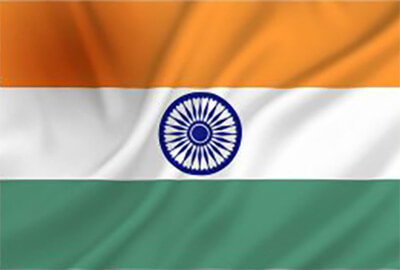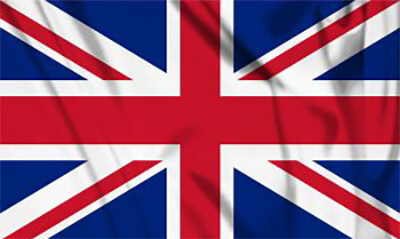| Page Created |
| February 17th, 2025 |
| Last Updated |
| February 20th, 2025 |
| India |
 |
| Great Britain |
 |
| Related Pages |
| 1st Air Commando Group 2nd Air Commando Group 44th Indian Airborne Division |
| May 1st, 1945 – May 6th, 1945 |
| Operation Dracula |
| Objectives |
- Capture Rangoon
- Secure the strategic port and administrative centre to accelerate the Japanese collapse in Burma.
- Prevent the Japanese from conducting a scorched-earth retreat that could damage critical infrastructure.
- Secure a Base for Further Operations
- Establish a logistical hub for Fourteenth Army operations moving south.
- Support ongoing land advances from Operation Extended Capital (the drive from central Burma towards Rangoon).
- Pre-empt Japanese Reinforcements or Defence
- Land airborne and amphibious forces before the Japanese could mount a strong defence.
- Exploit intelligence indicating a potential withdrawal of Japanese troops from the city.
- Coordinate with Resistance Forces
- Assist the Anti-Fascist Organisation (Burmese resistance) in disrupting Japanese supply lines.
- Encourage local uprisings to weaken remaining enemy positions.
- Link Up with Fourteenth Army
- Ensure a swift junction between the amphibious forces and Lieutenant General William Slim’s advancing troops.
- Avoid a prolonged battle by securing key positions ahead of land reinforcements.
| Operational Area |
| Allied Forces |
- 1st Air Commando Group
- 2nd Air Commando Group
- 44th Indian Airborne Division
- Headquarters Company consists of men from the 2nd and 3rd (Gurkha) Parachute Battalions
- A and B from the 2nd (Gurkha) Parachute Battalion
- C and D from the 3rd (Gurkha) Parachute Battalion
- Mortar platoon
- Machine gun platoon
- Pathfinders
- Troop of the 411th Parachute Squadron, Royal Indian Engineers
- Detachment of the 80th Parachute Field Ambulance
- 50th Indian Brigade Signals
- Detachment of the Intelligence Corps
- 26th Indian Infantry Division
| Axis Forces |
- Japanese Burma Area Army
| Operation |
Rangoon, the capital and major port of Burma, has been a strategic target since Japan entered the war in December 1941. The city is bombed on December 23rd, 1941, prompting an exodus of its Indian, Anglo-Indian, and Anglo-Burmese populations. In early 1942, the Japanese advance forces the British to evacuate Rangoon, making the defence of Burma untenable. The Allies are compelled to retreat into India and China, leading to a prolonged stalemate. By 1944, Allied reinforcements and improved logistical infrastructure enable an offensive into Burma. The Japanese attempt to pre-empt this with an invasion of India but suffer a major defeat at the Battle of Imphal. Their losses severely hinder their ability to defend Burma the following year.
In July 1944, the Allied South East Asia Command devises plans for the reconquest of Burma. Among these, an amphibious assault on Rangoon, initially codenamed Plan Z and later developed into Operation Dracula, is considered. The capture of Rangoon would cut Japanese supply lines, forcing their withdrawal from most of Burma. However, with resources stretched thin due to the ongoing Battle of Normandy, Operation Dracula is postponed in favour of an inland offensive, codenamed Operation Capital.
By late 1944, additional landing craft become available, first used in operations along the Arakan coast. The Indian XV Corps captures Akyab Island on December 31st, 1944, followed by landings on the Myebon Peninsula and Ramree Island in January 1945. Airfields established on these islands allow the Fourteenth Army to sustain its advance into Central Burma.
During February and March 1945, the Fourteenth Army, under Lieutenant General William Slim, secures decisive victories in Central Burma. Japanese forces are reduced to remnants, forced to retreat into the Shan States. Slim orders a rapid advance south along the Irrawaddy and Sittang River valleys. By the end of April, Indian IV Corps, led by Lieutenant General Frank Messervy, reaches Pegu, only 64 kilometres north of Rangoon.
Despite these advances, Lieutenant General Slim remains concerned. His forces are stretched thin, supply lines are overextended, and the impending monsoon threatens to disrupt logistics. Fearing a prolonged siege similar to the Battle of Manila, he urges the reinstatement of Operation Dracula.
| April 2nd, 1945 |
Supreme Commander Admiral Louis Mountbatten orders the operation to proceed no later than May 5th, 1945. The necessary naval and air assets, previously allocated to an assault on Phuket Island, are reassigned to the Rangoon landings.
| April 22nd, 1945 |
In preparation, the Indian 5th Division captures the airfields at Toungoo.
| April 23rd, 1945 |
The Japanese Burma Area Army, commanded by Lieutenant General Hyotaro Kimura, has already decided against defending Rangoon. Ignoring orders from Field Marshal Hisaichi Terauchi to hold the city at all costs, Kimura opts for a withdrawal to Moulmein. His chief of staff, Lieutenant General Shinichi Tanaka, opposes this decision, but by the time he returns from an inspection tour, the evacuation is already underway. With communications disrupted, effective command of the battle for Burma is lost.
| April 26th, 1945 |
As the British advance towards Pegu, Japanese rear-area troops and civilians are hastily mobilised into the 105th Independent Mixed Brigade, commanded by Major General Hideji Matsui. Matsui, unaware of the evacuation order, finds Kimura’s headquarters abandoned. He attempts to organise resistance at Pegu but is delayed by transport shortages. Meanwhile, many Japanese troops attempt to flee Rangoon by sea.
| April 27th, 1945 |
British and Indian troops reach Pegu and encounter stiff resistance from Matsui’s forces. Torrential rain slows their progress.
| April 30th, 1945 |
Nine out of eleven ships in one of these Japanese convoy from Rangoon are sunk by British destroyers. Kimura and key personnel escape by air, while others, including Ba Maw, Prime Minister of the Japanese-backed Burmese government, flee overland.
The Indian 17th Infantry Division launches its main assault. The Japanese demolish bridges to delay the advance.
| May 1st, 1945 |
The Japanese forces in Pegu withdraw and abandoning the city. The British resume their advance, but the monsoon sets in, flooding the countryside and hampering movement.
This date also marks the start of the first phase of Operation Dracula. A critical component of this operation was neutralizing Japanese coastal defences along the Yangon River, including the artillery battery positioned at Elephant Point. Elephant Point is situated in the Yangon Region of Burma nowadays Myanmar, projecting into the Gulf of Martaban, an arm of the Andaman Sea. The area is characterized by significant tidal variations, with ranges between 4 to 7 metres, the highest occurring at Elephant Point. These tidal dynamics contribute to the region’s complex coastal environment.
The 44th Indian Airborne Division receives this task, but several challenges arise. The division is undergoing reorganisation, and many officers are on leave. Two Gurkha airborne battalions are also away, while the 3rd Gurkha Parachute Battalion is preparing to transfer to the 77th Indian Parachute Brigade. With no single unit fully available, a composite force is assembled for the operation.
The Headquarters Company consists of men from the 2nd and 3rd (Gurkha) Parachute Battalions. Each battalion provides two additional companies, A and B from the 2nd (Gurkha) Parachute Battalion, C and D from the 3rd (Gurkha) Parachute Battalion. A mortar platoon and a machine gun platoon strengthen the improvised formation. This makeshift battalion takes shape in early April and comes under the command of Major Jack Newland.
Once formed, the battalion moves to Chaklala, where it is reinforced with Pathfinders, a troop of the 411th Parachute Squadron, Royal Indian Engineers, a Detachment of the 80th Parachute Field Ambulance, the 50th Indian Brigade Signals and Intelligence Corps elements. Training for the operation follows. After completing this phase, the unit relocates to Midnapore. Over ten days, it gathers equipment and conducts a rehearsal exercise. On April 29th, 1945, the battalion is flown to Akyab on the Burmese coast, approximately 320 kilometres north of Rangoon. A 200-strong reserve force, composed of men from both Gurkha battalions and the 152nd Indian Parachute Battalion, joins them soon after.
The battalion is transported in 40 C-47 Skytrain aircraft belonging to the 1st and 2nd United States Air Commando Groups.
At 02:30, a pathfinder team is the first to depart in a C-47 Dakota to mark the landing zone at Tawhai. Shortly after, the main force boards 38 Dakotas and takes off, parachuting into the target area at 05:45. The drop is largely successful, with only a few minor casualties on landing. The battalion quickly assembles and begins its advance toward Elephant Point. Torrential rain makes progress difficult, and soon after, the battalion’s C Company suffers a friendly fire incident. Despite carrying clear identification markers, one company is mistakenly bombed and strafed by American B-24 Liberators, resulting in significant casualties. The forward air controller immediately calls off further airstrikes to prevent additional losses.
Undeterred, the Gurkhas continue their advance towards the heavily fortified artillery battery at Elephant Point. The Japanese defenders, deeply entrenched in bunkers and pillboxes, put up stiff resistance. Close-quarters combat ensues, with the Gurkhas employing flamethrowers, grenades, and small arms to clear each position methodically. The engagement lasts for several hours as the battalion systematically eliminates enemy strongholds. By 16:00, the main battery is stormed, and after intense fighting, the last defenders are overcome. Approximately 40 Japanese soldiers are killed, while the Gurkhas sustain further casualties.
With Elephant Point secured, the battalion holds its position overnight, enduring severe weather conditions as high tides flood their trenches.
| May 2nd, 1945 |
By dawn, the provisional (Gurkha) battalion clears the remaining Japanese bunkers, ensuring complete control of the area.
Shortly after, minesweepers begin clearing the Rangoon River, allowing the main invasion force to proceed. Later that day, the Indian 26th Infantry Division lands unopposed, marking the final phase of the operation.
A reconnaissance flight over Rangoon finds no sign of Japanese troops. Former British prisoners of war signal their departure by painting a message on the jail rooftop: “Japs gone. Extract digit.” The Indian 26th Infantry Division enters the city without resistance. However, with the collapse of Japanese administration, lawlessness takes hold. Looting is widespread, and the city is in a dire state. Disease spreads, food supplies are scarce, and armed bandits roam the outskirts. Order is gradually restored as British forces take control.
Meanwhile, the 2nd Air Commando Group, 317th Tactical Control Squadron’s C-47’s, which transported the parachute battalion, returns to Kalaikunda, West Bengal, India before moving to Comilla, in eastern Bangladesh. The Squadron spends the next two weeks supplying XV Corps, which continues operations against Japanese forces northeast of Rangoon. The squadron returns to Kalaikunda on May 19th, 1945. The group’s 1st and 2nd Fighter Squadrons provide air cover for Rangoon until May 9th, 1945, before redeploying.
| May 3rd, 1945 |
The composite Gurkha Parachute battalion moves to Sadainghmut.
| May 6th, 1945 |
Leaving one company behind in Sadainghmut, the Provisional (Gurkha) Parachute Battalion transfers to Rangoon, where it conducts anti-looting operations and searches for Japanese stragglers.
| May 6th, 1945 |
Indian troops link up with Fourteenth Army units at Hlegu, securing a vital line of communication. Meanwhile, remnants of Matsui’s forces regroup with the Japanese 28th Army in the Pegu Yomas. In July, they attempt to break through Allied lines but suffer heavy casualties. Japanese naval personnel, attempting a separate breakout, are nearly annihilated.
Operation Dracula secures Rangoon before the monsoon disrupts Allied operations. With a vital port and supply base recaptured, the reconquest of Burma is assured. The success of the coordinated airborne, amphibious, and overland assaults highlights the strategic effectiveness of Allied planning in the final months of the Burma Campaign.
| May 16th, 1945 |
The Provisional (Gurkha) Parachute Battalion leaves Rangoon, after which it departs for India by ship, rejoining the 44th Indian Airborne Division.
| Aftermath |
Operation Dracula, the Allied assault on Rangoon in May 1945, resulted in relatively low casualties due to the prior evacuation of Japanese forces. The most significant losses occurred during the airborne operation at Elephant Point on May 1st, 1945. A composite Gurkha parachute battalion suffered a friendly fire incident when B-24 Liberators from the U.S.A.A.F. mistakenly targeted C Company, leading to 15 soldiers killed and 30 wounded.
In the subsequent assault on Japanese positions, the battalion incurred an additional 41 casualties. Approximately 40 Japanese defenders were killed during this engagement.
Overall, the operation achieved its objectives with minimal Allied losses, primarily due to the absence of significant Japanese resistance in Rangoon.
| Multimedia |

